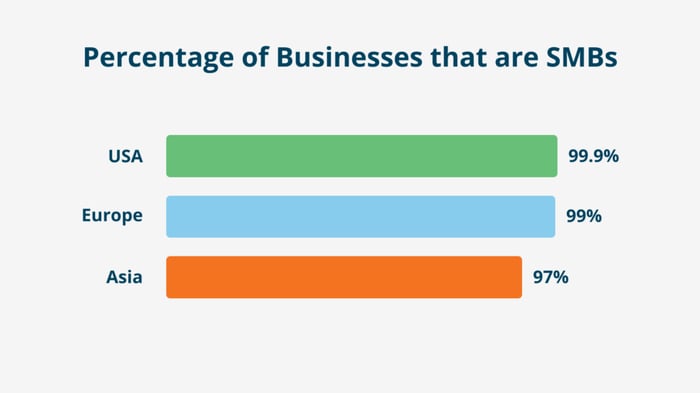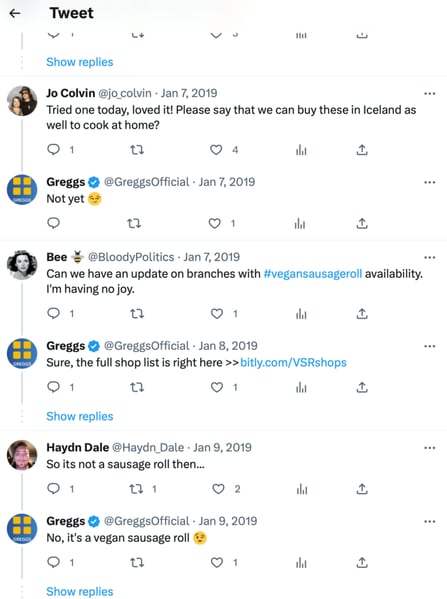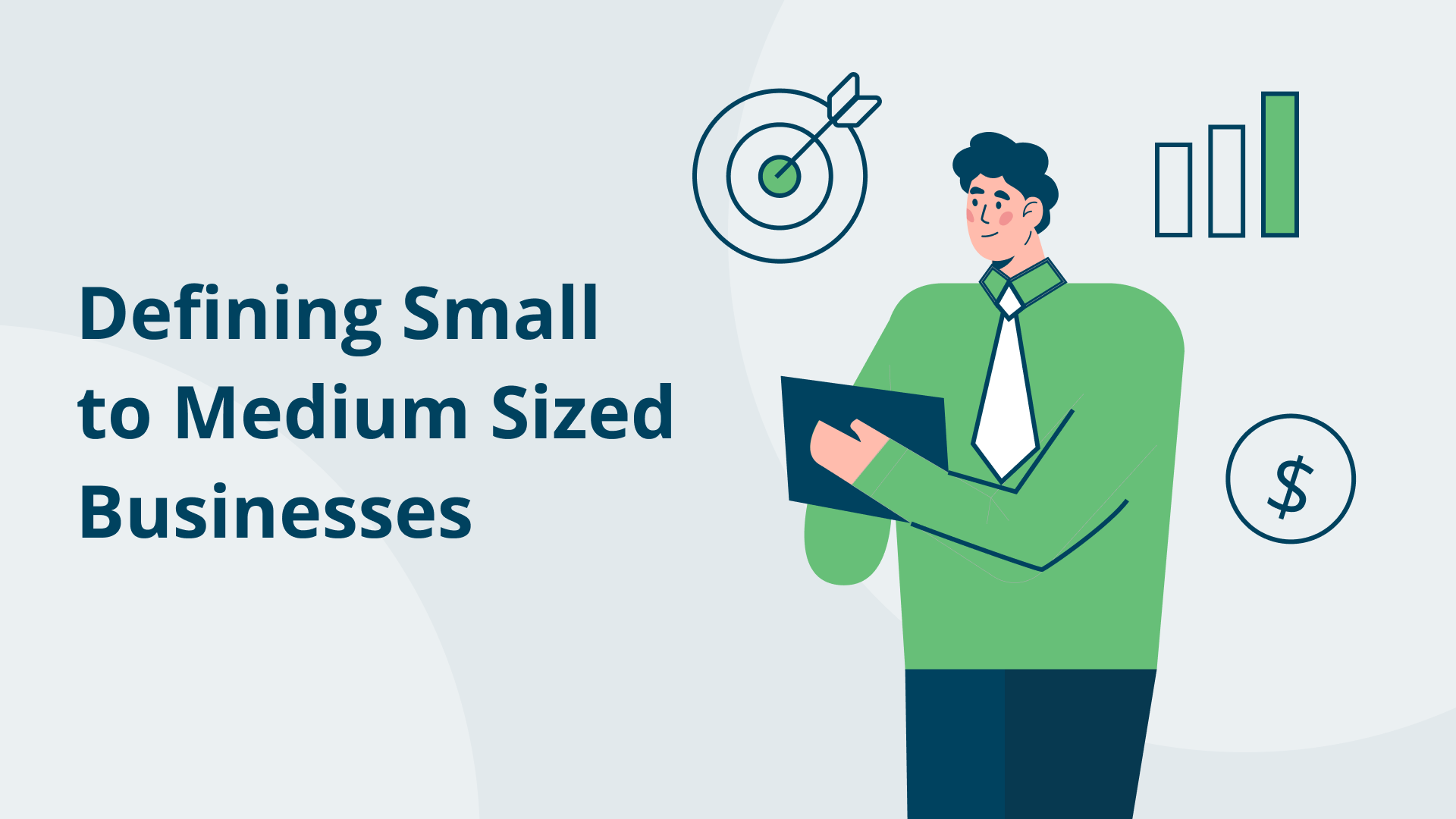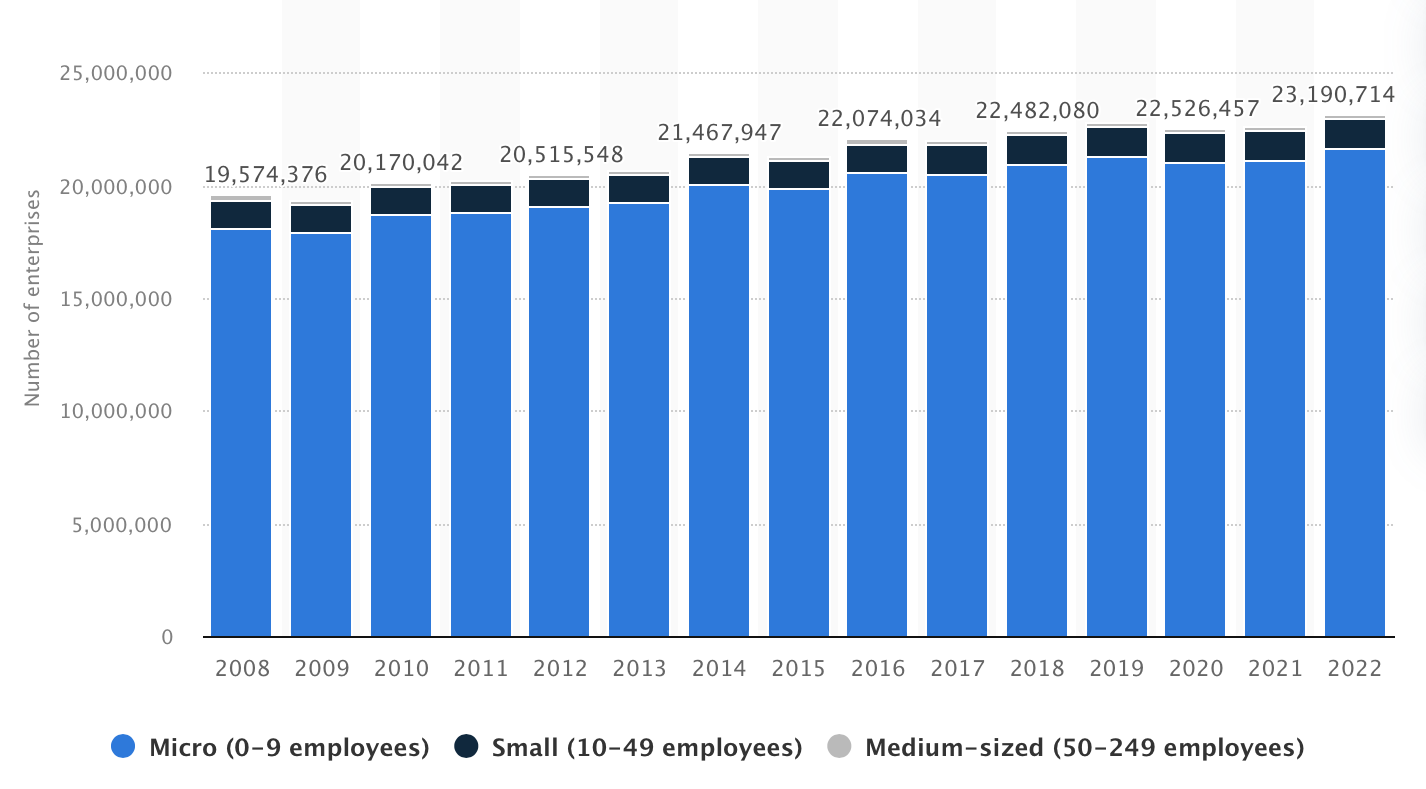What Is an SMB? Defining Small to Medium-Sized Businesses
SMB stands for “Small to Medium-Sized Businesses” and includes the vital enterprises that form the backbone of the global economy. These businesses are leading drivers of entrepreneurship, innovation, and job creation and contribute significantly to economic growth.
In this article, we’ll explore the meaning of SMBs, providing a clear understanding of their role and impact. Additionally, we’ll outline the key characteristics of SMBs and statistics showcasing their impact on the global business landscape across North America, Europe, and Asia. We’ll also talk about how SMBs thrive on social media, and how businesses use social media to help grow their SMBs.

Manage all your social media accounts in one place.
Craft, schedule, & auto-post content to all your social channels, then track analytics and manage interactions from a single, easy-to-use dashboard.
SMB characteristics, size, and structure
SMBs are a vital component of the global economy, encompassing a wide range of enterprises that play a significant role in entrepreneurship, innovation, job creation, and economic growth. Understanding the characteristics, size, and structure of SMBs is the only way to comprehend their impact on the business landscape.
Let’s delve into these aspects further.
Characteristics of small to medium-sized businesses
- SMBs make up the majority of businesses in most countries, representing a diverse array of industries and sectors.
- They’re typically characterized by their relatively smaller scale compared to larger companies, which often translates to more agility, flexibility, and a closer connection to their customer base.
- SMBs often exhibit a strong entrepreneurial spirit, driving innovation and fostering local economies.
- These businesses can range from sole proprietorships and small family-owned enterprises to businesses with hundreds of employees.
Thresholds for SMB classification
- The definition of an SMB can vary depending on factors such as employee count and annual revenue. While definitions may differ across countries, common thresholds include employee counts ranging from less than 100 to 999 employees.
- Revenue thresholds can also provide an indication of SMB size. However, it’s important to note that revenue thresholds can differ based on the industry and regional context.
SMB vs. SME: What’s the difference?
In the United States, the term SMB is commonly used, particularly by the Small Business Administration (SBA). Conversely, the term SME (small and midsize enterprises) is more prevalent in other regions and by international organizations such as the United Nations, World Bank, and the European Union.
Understanding the size and structure of SMBs
- SMBs encompass a broad spectrum of businesses, ranging from micro-enterprises with a handful of employees to medium-sized enterprises with hundreds of employees.
- Organizational structures can vary, with SMBs operating as sole proprietorships, partnerships, limited liability companies (LLCs), or corporations.
- While larger businesses may have more complex hierarchies and specialized departments, SMBs often have a leaner structure.
By grasping the characteristics, size, and structure of SMBs, we gain insight into the dynamic nature of these businesses and their significant impact on local and global economies. In the following sections, we’ll explore the statistics that highlight the prevalence and contributions of SMBs in different regions, further emphasizing their vital role in the business landscape.
Small to medium-sized business statistics
When it comes to the business world and the global economy, small to medium-sized businesses pack quite a punch. These mighty enterprises may be smaller in scale, but their impact is nothing short of massive.

Let’s take a closer look at some eye-opening statistics that showcase the prevalence and contributions of SMBs across various regions.
In the United States, SMBs reign supreme, making up a staggering 99.9% of all businesses. That’s right, almost every business you encounter falls into the SMB category. But don’t let their size fool you. Despite their modest stature, small businesses have been credited with creating nearly two-thirds (63%) of all new jobs from 1995 to 2021.
That’s a whopping 17.3 million new jobs!
But the impact of SMBs doesn’t stop there. Small businesses represent 97.3% of all exporters and account for 32.6% of the total export value, which amounts to $413.3 billion annually.
Now, here’s another interesting tidbit. While the majority of small businesses operate without any employees, a considerable number do employ a small workforce. Approximately 16% of small businesses have between 1 and 19 employees, showcasing the diverse range of SMBs. There are 33.2 million small businesses in the US. Out of these, a mere 650,003 have between 20 and 499 employees.
Shifting our focus to Europe, we find that SMBs are also the backbone of the continent’s economy. In the European Union alone, there were an estimated 23.1 million SMBs in 2022. That’s 99.9% of all businesses across the continent. The majority of these enterprises are micro-sized firms, employing fewer than nine people. Additionally, there were around 1.35 million small firms with 10 to 49 employees and approximately 206,592 medium-sized firms with 50 to 249 employees.
Across Asia, SMBs also play a pivotal role: 97% of all businesses in the region are SMBs, and they employ 67% of the working population.
As we can see from these statistics, SMBs are the lifeblood of economies worldwide. They may be small or medium-sized, but they make a massive impact on the global stage.
Next, we’ll explore how SMBs leverage the power of social media with a dominant digital presence.
How SMBs can thrive on social media
Authenticity and personal connection give SMBs an edge on social media over large businesses. This allows them to build stronger relationships and loyalty. Additionally, SMBs can be more agile and responsive, allowing them to adapt quickly to social media trends and engage in real-time conversations with their audience.
In 2021, 91.9% of US marketers in companies with over 100 employees were expected to use social media for marketing purposes. For businesses of all sizes, that number continues to grow.
Let’s explore how SMBs can make the most of social media to boost their brand, engage with customers, and achieve remarkable growth.
- Increase reach and brand awareness: Social media platforms such as Facebook, Instagram, Twitter, and TikTok offer SMBs a chance to reach a vast targeted audience without breaking the bank.
- Interact with customers: Social media breaks down the barriers between businesses and their customers. SMBs can leverage this by actively engaging with their audience through comments, direct messages, and interactive content.
- Create authentic content that works best: Unlike larger companies that may rely on massive production teams, SMBs have the advantage of authenticity. They can create content that showcases their unique story, personality, and values.
- Leverage user-generated content: SMBs can encourage their customers to create and share content related to their products or services. User-generated content acts as a powerful endorsement and social proof, enhancing brand credibility and attracting potential customers.
- Take advantage of targeted advertising: Social media platforms offer sophisticated targeting options that allow SMBs to reach their ideal customer profile with precision.
How small to medium-sized businesses use social media to grow exponentially
Every day small to medium-sized businesses go viral on social media using platforms such as Instagram, TikTok, and Facebook. We’re not talking about views that lead to double or triple a typical day’s sales. We’re talking 10x, 20x, or 100x. Often!
The right social media strategy can quite literally transform businesses overnight. Let’s take a look at a couple of success stories of SMBs that used social media for exponential growth.
Greggs
A UK-based bakery chain launched their vegan sausage roll on Twitter in 2019 with this epic teaser video.

Things then got spicy, weird, and hilarious in the comment section. The engagement was off the charts. People from across the globe were giving their opinions, clamoring for expansion, and doling out praise.

Not only did this concept stir up some controversy, but Greggs used this engagement to keep the conversation going.
Enchanted Scrunch
Dasha used TikTok to go from selling two scrunchies a week to over 500 a day! In one year since she started the Scrunchie business, she grew it into a 6-figure business with almost 90% of her sales coming through the platform.
Dasha accomplished this feat at the age of 15, BTW!

She’s since grown her TikTok to over 480k and boasts an engaged following of over 9,000 people.
Conclusion
SMBs are the unsung heroes of the global economy. From sole proprietorships to small family-owned enterprises or growing midsize businesses, SMBs play an important role. By leveraging social media, your small to medium-sized business can have enormous reach.
Social media management platforms are one way to achieve this success. You no longer need a massive budget and a large team of professionals. Companies like Loomly provide the features, know-how, and resources to optimize, create, and expand your social presence and grow organically.
Loomly users can create expert posts, schedule posts to share automatically, and get automated analytics reports, among a long list of other powerful tools and access to several social media marketing courses. Experience the benefits of Loomly and start your free trial today!

 (
(

